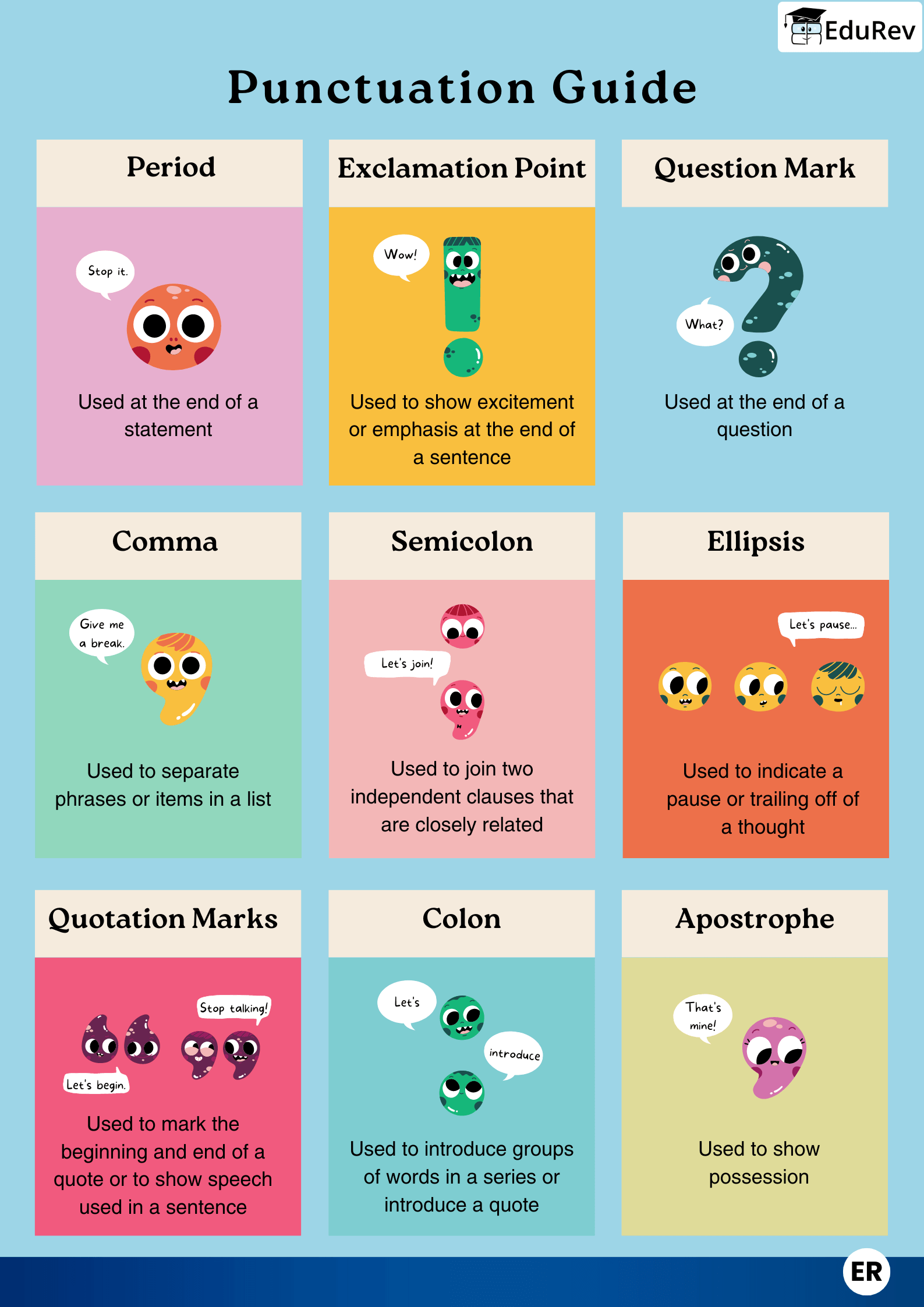Class 5 Exam > Class 5 Notes > English Grammar Class 5 > Infographics: Punctuation
Infographics: Punctuation | English Grammar Class 5 PDF Download

The document Infographics: Punctuation | English Grammar Class 5 is a part of the Class 5 Course English Grammar Class 5.
All you need of Class 5 at this link: Class 5
|
37 videos|289 docs|53 tests
|
FAQs on Infographics: Punctuation - English Grammar Class 5
| 1. What are the different types of punctuation marks and their uses? |  |
Ans. There are several types of punctuation marks, each serving a specific purpose. Common punctuation marks include:
- Period (.) - Indicates the end of a sentence.
- Comma (,) - Separates items in a list or clauses in a sentence.
- Question mark (?) - Indicates a direct question.
- Exclamation mark (!) - Shows strong emotion or emphasis.
- Colon (:) - Introduces a list, quote, or explanation.
- Semicolon (;) - Links closely related independent clauses.
- Quotation marks (" ") - Encloses direct speech or quotations.
| 2. How can I improve my punctuation skills? |  |
Ans. To improve your punctuation skills, consider the following tips:
- Read extensively to see punctuation in context.
- Practice writing regularly and pay attention to punctuation use.
- Review grammar and punctuation guides to understand rules.
- Take online quizzes or exercises focused on punctuation.
- Seek feedback from peers or instructors on your writing.
| 3. What are common punctuation mistakes to avoid? |  |
Ans. Common punctuation mistakes include:
- Misplacing commas, particularly in compound sentences.
- Overusing or underusing quotation marks.
- Confusing colons and semicolons.
- Not using apostrophes correctly for possessives and contractions.
- Forgetting to include a period at the end of a sentence.
| 4. Why is punctuation important in writing? |  |
Ans. Punctuation is crucial because it clarifies meaning, helps convey tone, and ensures the reader understands the intended message. Proper punctuation can prevent misunderstandings and improve the overall readability of the text. It acts as a guide for the reader, indicating pauses, stops, and the structure of sentences.
| 5. How does punctuation differ in formal and informal writing? |  |
Ans. In formal writing, punctuation is used more strictly to adhere to grammatical rules, ensuring clarity and professionalism. In informal writing, such as personal emails or text messages, punctuation may be used more loosely, allowing for conversational tone and style. However, even in informal contexts, clarity should still be maintained.
Related Searches





















